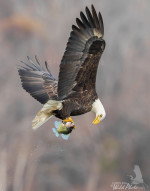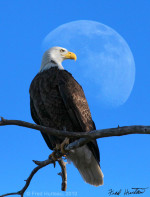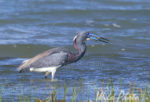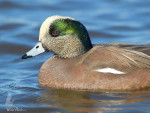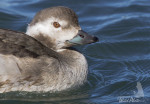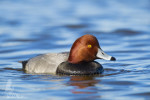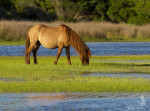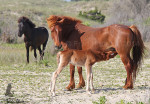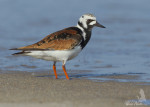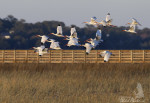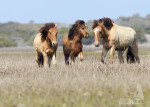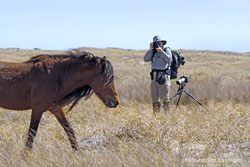A Marathon 48 Hours of Duck Heaven – Part Three
by admin on Mar.28, 2014, under Locations, Rants, Raves & Ramblings
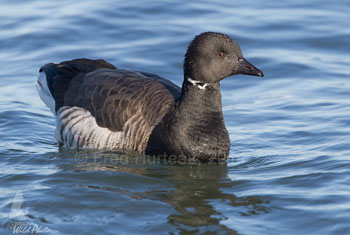 As promised, this part three post is about some birds I’d never seen or photographed before. The beginning of my marathon weekend was a 9 hour drive to New Jersey, north of Atlantic City, to the Barnegat Lighthouse. Next to the lighthouse is a long jetty of huge boulders which attracts birds of the open sea not commonly seen along the shore. Because of this, Barnegat Light is popular among birders and wildlife photographers for viewing Harlequin Ducks, Black Scoters, Surf Scoters, Long-tailed Ducks, Red-breasted Mergansers, Scaup and others, including the Common Loon. Lucky for me, I also found another species I had not expected…. Brant geese.
As promised, this part three post is about some birds I’d never seen or photographed before. The beginning of my marathon weekend was a 9 hour drive to New Jersey, north of Atlantic City, to the Barnegat Lighthouse. Next to the lighthouse is a long jetty of huge boulders which attracts birds of the open sea not commonly seen along the shore. Because of this, Barnegat Light is popular among birders and wildlife photographers for viewing Harlequin Ducks, Black Scoters, Surf Scoters, Long-tailed Ducks, Red-breasted Mergansers, Scaup and others, including the Common Loon. Lucky for me, I also found another species I had not expected…. Brant geese.
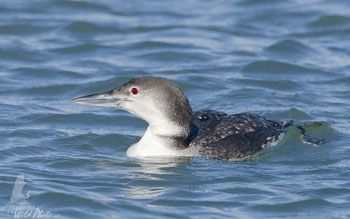 Among all of these the only species I had already seen or photographed was the Common Loon, and that was just once. It wasn’t a very good photo either, so I was quite pleased to have a better shot at this unusual bird. I found out it was quite a bit larger than I had realized once I saw it in the context of some of these other birds.
Among all of these the only species I had already seen or photographed was the Common Loon, and that was just once. It wasn’t a very good photo either, so I was quite pleased to have a better shot at this unusual bird. I found out it was quite a bit larger than I had realized once I saw it in the context of some of these other birds.
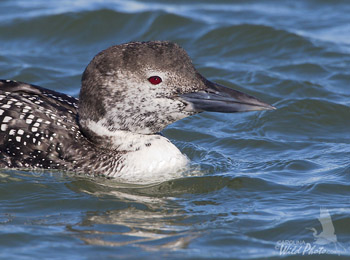 The stout but very sharp pointed bill of the Loon looks like a serious weapon for catching the fish it eats. The ruby red eyes, like those of the Canvasback duck, are certainly an attention-getting attribute. Otherwise, the Common Loon is dressed in relatively plain, conservative brownish-black markings on an otherwise white body, which makes the eye stand out even more.
The stout but very sharp pointed bill of the Loon looks like a serious weapon for catching the fish it eats. The ruby red eyes, like those of the Canvasback duck, are certainly an attention-getting attribute. Otherwise, the Common Loon is dressed in relatively plain, conservative brownish-black markings on an otherwise white body, which makes the eye stand out even more.
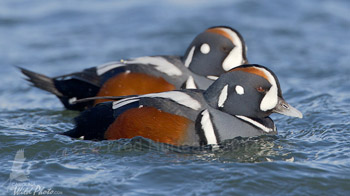 But the bird I came specifically to see and photograph at Barnegat Light was the Harlequin Duck, seen here at left. The distinctive white, black and burnt orange markings on a steel gray background certainly stand out in a crowd of ducks. I had hoped to get photos of these ducks perched on the rocks, but they were not cooperating on that point, so I settled for shots of them in the water. The major issue with shots on the water is that the ocean chop bobs these feathered corks up and down to such an extent it’s extremely difficult to keep them in the viewfinder long enough to focus on them and get a shot.
But the bird I came specifically to see and photograph at Barnegat Light was the Harlequin Duck, seen here at left. The distinctive white, black and burnt orange markings on a steel gray background certainly stand out in a crowd of ducks. I had hoped to get photos of these ducks perched on the rocks, but they were not cooperating on that point, so I settled for shots of them in the water. The major issue with shots on the water is that the ocean chop bobs these feathered corks up and down to such an extent it’s extremely difficult to keep them in the viewfinder long enough to focus on them and get a shot.
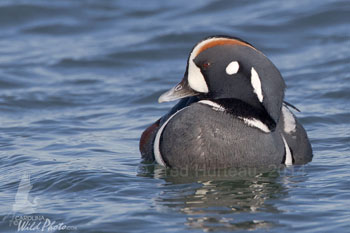 Luckily, the swells diminished somewhat as the day progressed, which made the task a little easier. There were hardly more than a dozen Harlequins at the lighthouse though, spread along the jetty, bobbing and swimming back and forth, making it a waiting game to patiently watch for one or two of them to drift or paddle close enough for photos. Persistence paid off, with enough photos to make the trip worthwhile.
Luckily, the swells diminished somewhat as the day progressed, which made the task a little easier. There were hardly more than a dozen Harlequins at the lighthouse though, spread along the jetty, bobbing and swimming back and forth, making it a waiting game to patiently watch for one or two of them to drift or paddle close enough for photos. Persistence paid off, with enough photos to make the trip worthwhile.
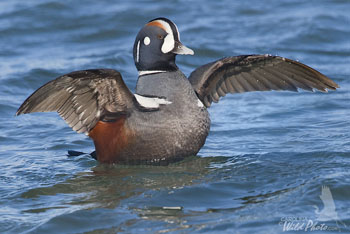 I even managed to get a few preening photos, the more interesting of them being when the ducks finish washing and preening, and do a stand-up, flapping wing stretch exercise. It’s an opportunity to see what the underside of the wings look like far more easily than trying to get photos of them in flight to see it. In the case of the Harlequin, all its flashy coloration is on the outside, and not under its wings, which turned out to be just plain gray underneath.
I even managed to get a few preening photos, the more interesting of them being when the ducks finish washing and preening, and do a stand-up, flapping wing stretch exercise. It’s an opportunity to see what the underside of the wings look like far more easily than trying to get photos of them in flight to see it. In the case of the Harlequin, all its flashy coloration is on the outside, and not under its wings, which turned out to be just plain gray underneath.
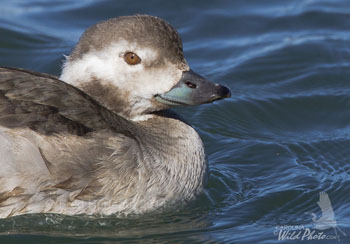 While trying to wait patiently for the ducks to drift close enough for photos, there was the constant temptation to change spots along the jetty trying to get closer to the other species there, like the darling little Long-tailed Ducks. This led to more moving, and looking, and waiting being done than snapping of photos. Because there were even fewer Long-tailed Ducks here than Harlequins, it made the pursuit of them even more tempting. I would have preferred to pick a spot and wait for the ducks, but I only had half a day to spend at the lighthouse jetty and needed to make the most of it.
While trying to wait patiently for the ducks to drift close enough for photos, there was the constant temptation to change spots along the jetty trying to get closer to the other species there, like the darling little Long-tailed Ducks. This led to more moving, and looking, and waiting being done than snapping of photos. Because there were even fewer Long-tailed Ducks here than Harlequins, it made the pursuit of them even more tempting. I would have preferred to pick a spot and wait for the ducks, but I only had half a day to spend at the lighthouse jetty and needed to make the most of it.
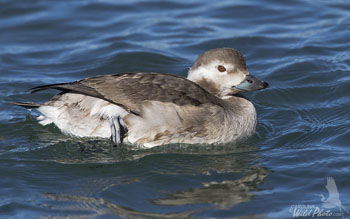 Unlike most other ducks that molt twice a year, the Long-tailed Ducks undergo an almost continual molting of feathers for seven months during the year. This gives them four different coloration patterns during that time, none of which is kept for long before they molt again. During the winter months they generally retain the somewhat drab irregular brown and white pattern seen in these photos. The muddy orange of the eyes does little to add to their rather plain Jane winter appearance.
Unlike most other ducks that molt twice a year, the Long-tailed Ducks undergo an almost continual molting of feathers for seven months during the year. This gives them four different coloration patterns during that time, none of which is kept for long before they molt again. During the winter months they generally retain the somewhat drab irregular brown and white pattern seen in these photos. The muddy orange of the eyes does little to add to their rather plain Jane winter appearance.
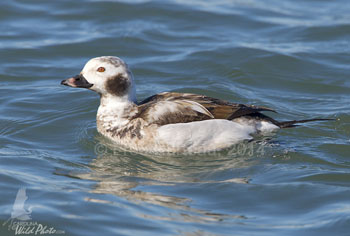 The one interesting thing about the winter coloration is the turquoise blue on the bill, and a similar tint to the legs and feet…. a color I’ve never noticed on any other ducks. But not all of them showed that color, as in this photo, where the cute little stubby bill is mostly black with some pink near the tip. The “long” in “Long-tailed” is a bit more obvious in this photo, though once again, the winter plumage has shorter tail feathers than the more interesting summer plumage.
The one interesting thing about the winter coloration is the turquoise blue on the bill, and a similar tint to the legs and feet…. a color I’ve never noticed on any other ducks. But not all of them showed that color, as in this photo, where the cute little stubby bill is mostly black with some pink near the tip. The “long” in “Long-tailed” is a bit more obvious in this photo, though once again, the winter plumage has shorter tail feathers than the more interesting summer plumage.
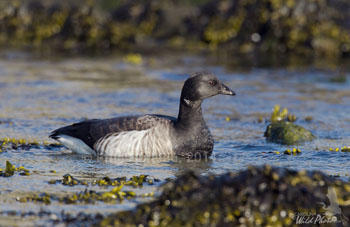 Late in the day I discovered a pair of Brant geese feeding in a pool along the jetty, apparently undeterred by the presence of visitors with their dogs strolling along the beach and barking hardly 30 feet away. It seemed even the other photographers were just as staunchly ignoring the Brant. I’d never seen Brant before, and I jumped at the chance to photograph them so closely. The yellow-green seaweed on the rocks of the pool where they were feeding added a welcome splash of color to the simple black and white of the Brant. I probably ended up taking more photos of the Brant than all the other birds combined at the lighthouse, mostly because they were so cooperative.
Late in the day I discovered a pair of Brant geese feeding in a pool along the jetty, apparently undeterred by the presence of visitors with their dogs strolling along the beach and barking hardly 30 feet away. It seemed even the other photographers were just as staunchly ignoring the Brant. I’d never seen Brant before, and I jumped at the chance to photograph them so closely. The yellow-green seaweed on the rocks of the pool where they were feeding added a welcome splash of color to the simple black and white of the Brant. I probably ended up taking more photos of the Brant than all the other birds combined at the lighthouse, mostly because they were so cooperative.
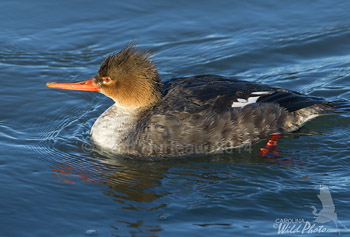 When the sun began to drop too low to make continued photography worthwhile, I headed back along the jetty on my way out and spotted some Red-breasted Mergansers. Unfortunately, the male of the pair was uncooperative in getting close enough for a good photo of its striking plumage. However, one of the hens was close enough, although the low sun was casting deep shadows along the jetty where she was swimming. When she moved into spots of sunlight slicing between the giant jetty rocks, I took a few shots. I was not happy with the high angle of the photos due to the location, but the light was glowing and made for some nice color.
When the sun began to drop too low to make continued photography worthwhile, I headed back along the jetty on my way out and spotted some Red-breasted Mergansers. Unfortunately, the male of the pair was uncooperative in getting close enough for a good photo of its striking plumage. However, one of the hens was close enough, although the low sun was casting deep shadows along the jetty where she was swimming. When she moved into spots of sunlight slicing between the giant jetty rocks, I took a few shots. I was not happy with the high angle of the photos due to the location, but the light was glowing and made for some nice color.
I certainly plan on returning to Barnegat Light next year, hopefully with more time at my disposal to see what other new species I can capture there, as well as perhaps getting even better photos than this first trip to the jetty at Barnegat Lighthouse.
 This blog is an extension of the
This blog is an extension of the 